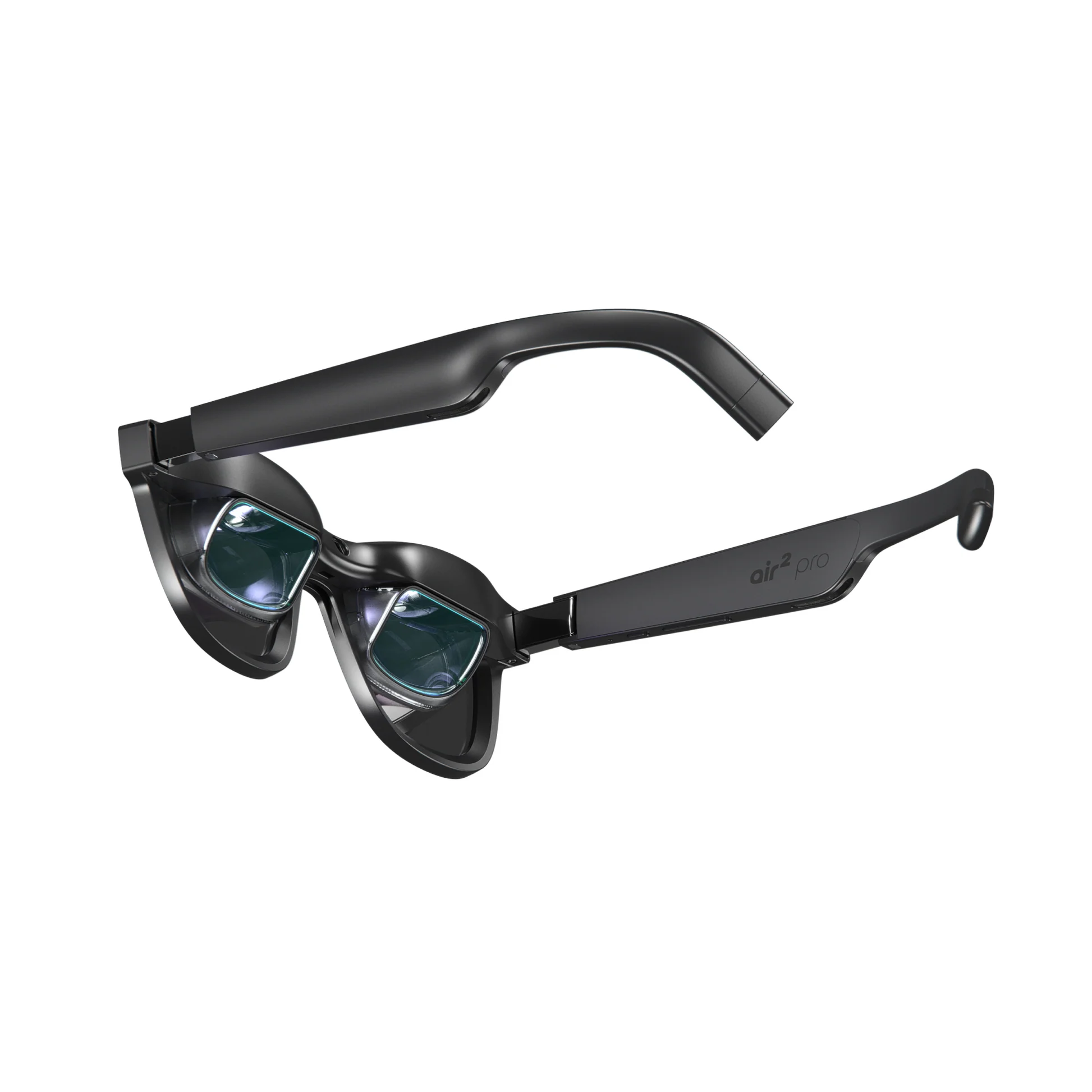VR glasses, are cutting-edge augmented reality (AR) glasses designed for immersive digital experiences. They represent a blend of AR and VR technology, with a focus on portability and usability in everyday life unlike VR headsets. VR glasses are primarily designed for augmented reality experiences but can be adapted for virtual reality (VR) and mixed reality use through compatible devices or setups.
Sleek Design, Powerful Tech
Weighing in at just under 80 grams, VR glasses are sleek and comfortable, making them ideal for extended use. Unlike traditional, bulky VR headsets, these glasses offer a lightweight alternative that doesn’t compromise on power. With dual micro-OLED displays, users can experience high-resolution visuals that seamlessly blend digital content into their real-world surroundings.
The glasses offer a 52-degree field of view (FOV), enabling users to project content into their environment, whether it’s for productivity, gaming, or watching movies on a giant virtual screen. With the introduction of XR Space mode, users can customize their workspace with multiple virtual screens, ideal for multitasking.
Immersive Entertainment and Gaming
For gamers and media enthusiasts, VR glasses are a game-changer. By connecting them to a smartphone, PC, or gaming console, users can project a 130-inch virtual screen in front of them, transforming any small space into a personal theater or immersive gaming station. The Air Casting mode further enhances this experience, allowing content to be streamed wirelessly to the glasses, freeing users from the need for cables.
But it’s not just entertainment where these glasses shine. These glasses are also designed to boost productivity, allowing users to create a virtual workspace on the go. The multi-screen functionality helps with keeping several apps open simultaneously, which is particularly useful for professionals who want to stay productive while traveling.
A Glimpse into the Future
VR glasses are more than just an upgrade in wearable technology—they signal the future of spatial computing. The AR capabilities of the glasses open up new possibilities for how users interact with both digital content and their real-world surroundings. From navigation apps that overlay directions onto real-world streets, to interactive 3D models for gaming and design, these glasses bring the future of mixed reality closer than ever.
Compatibility and Accessibility
One of the key strengths these glasses are offering is their cross-device compatibility. The glasses can be paired with Android and iOS devices, laptops, gaming consoles, and even desktops through HDMI or USB-C connections. This broad range of support means that users can integrate VR glasses into their existing tech ecosystem with ease.
Final Thoughts
VR glasses are positioning itself as a leader in augmented reality wearables, bringing lightweight, powerful AR and VR experiences to the everyday user. Whether for gaming, productivity, or entertainment, these glasses promise a seamless and immersive digital experience, all while remaining highly portable and user-friendly.
As AR and VR technology continue to evolve, VR glasses are set to play a significant role in shaping the future of how we interact with digital content.





